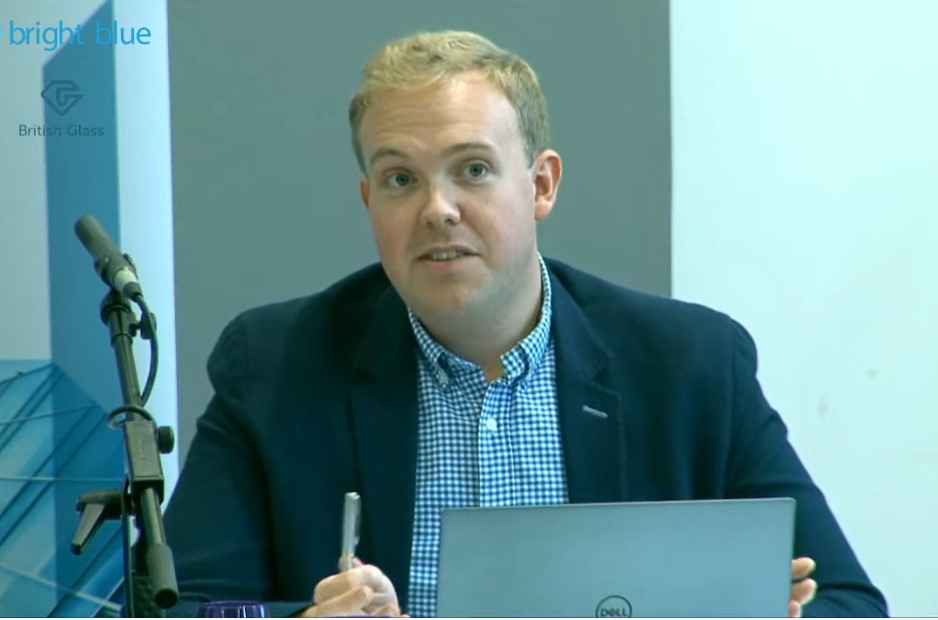OPINION: With the government due to respond to its consultation on a UK-wide DRS shortly, it’s vital that we embrace this opportunity to reform UK recycling and get the detail behind these impending regulations right.
At British Glass, we are proud of the work we are doing in collaboration with our membership to increase glass recycling rates, supported by dedicated local authority household recycling programmes. In fact, we have set an industry target of achieving a 90% glass collected for recycling rate by 2030.

We believe higher glass recycling rates can be achieved through consistent household collections, communication campaigns and extended producer responsibility (EPR). Meanwhile, we acknowledge that the government’s proposals for a DRS have a role to play in collecting and recycling certain materials. However, we firmly believe this is not the right solution for glass. As such, it’s crucial that we fully understand the implications of such a scheme before its design is finalised.
Single-use plastic
We are deeply concerned that the inclusion of glass in a DRS could increase the amount of single-use plastic in circulation – this is what the international evidence shows. When schemes were introduced in Germany, for example, there was a 60% increase in consumption of plastic. In Croatia, since the introduction of a DRS, plastic has become the market leader for beverage bottles. And in Finland, when PET plastic bottles were introduced into a DRS in 2008, the quantity of single-use PET increased from around 50 million units in 2007 to 375 million units in 2017.

There are several reasons for this shift to plastic. Having a flat deposit rate means there are cheaper upfront costs for larger PET packaging formats, for example, paying 20p for a two-litre plastic bottle versus paying £1.20 for six 330ml glass bottles. The introduction of such a deposit can encourage consumers to upsize.
Another reason is that plastic can be crushed within a DRS to reduce space and costs for manufacturers paying for the system, making plastic a more attractive packaging solution for producers. Unlike cans and plastic bottles, glass must be colour sorted to be recycled, meaning if glass is crushed below a certain size it can no longer be colour sorted and used for re-melting into new bottles. Crushing glass in this way not only risks bottle-to-bottle recycling, but would actually increase the glass industry’s emissions, as making new glass from recycled glass reduces energy use, saving 580kg of CO2 emissions with every tonne of glass re-melted versus using raw material. The glass industry wants to use more recycled glass, not more raw materials.
Any future recycling scheme for glass must include a remelt target to ensure glass is collected and recycled into new bottles and jars. Without this target, we will lose this glass from the circular economy making any economic case for the DRS weaker, reducing bottle-to-bottle recycling rates, and pushing up our emissions.
Vehicle emissions
There is also the additional environmental issue of associated vehicle emissions. Household collections for glass food packaging will still need to be maintained. Not only does splitting glass into two recycling streams make glass recycling more complex and inconsistent, it will also require two sets of vehicles to collect waste for recycling.
Splitting glass into two recycling streams make glass recycling more complex and inconsistent
What’s more, glass is heavier. The assumption from government is that glass will be transported back to shops for people to claim their deposit. But this relies on vehicles – which not everyone owns. It also comes at a time when government want to see people reducing their vehicle usage to improve air quality, and exercise more. Plastic and cans can be easily crushed and are light to transport, but having to cycle or walk with your glass bottles is more burdensome, especially for some societal groups like the elderly, and risks them breaking in transit, potentially creating litter or not being returned at all – all reducing glass recycling.
EPR
We already have a system in place which provides the foundations for 90% glass recycling – and it’s at our doorsteps. EPR will build on the success of our current household and bottle bank recycling schemes, enhance communications and information on recycling, all underpinned by consistent recycling across local authorities.

This is what happened in Norway and Sweden where a DRS for plastic runs alongside EPR for glass; Norway and Sweden have recycling rates of 89.4% and 92.8% respectively. We are already doing this in Wales, which has an impressive 87.3% capture rate for glass, showing what better communication and consistent collections can achieve.
We want to see more glass bottles recycled – and that is exactly why we do not want to see glass bottles in a DRS. Including glass would stand contrary to the government’s own environmental and sustainability aims.
We all know we need to recycle more glass. But glass must be recycled right.









Subscribe for free